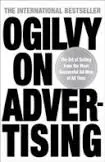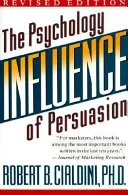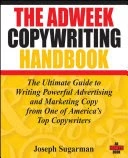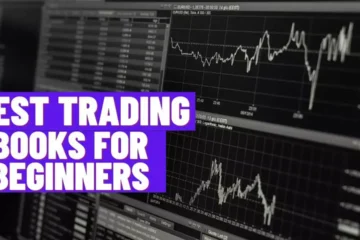Ever felt stuck in a copywriting rut, dreaming of crafting words that not only sell but resonate? Wondering where to start? You’re not alone.
In a world that’s always online, refining your copywriting skills is not just beneficial – it’s essential.
That’s where I step in. Today, we are diving into the goldmine of wisdom found in the best copywriting books out there.
These aren’t just books; they’re your roadmap to mastering the art of persuasion, one word at a time.
Section 1: The Pillars of Copywriting Mastery
1. "Ogilvy on Advertising" by David Ogilvy

In “Ogilvy on Advertising” David Ogilvy, the father of modern advertising, shares his invaluable insights and experiences.
This book dives deep into the essence of effective advertising, combining timeless wisdom with practical advice.
Key Concepts & Lessons:
- The importance of research in understanding your audience.
- Crafting compelling headlines that grab attention.
- The power of visual elements and their role in storytelling.
- Ogilvy’s famous mantra: “The consumer isn’t a moron; she’s your wife.”
Best For: This classic is a must-read for anyone in the field of advertising or copywriting, from beginners eager to understand the foundations to seasoned professionals looking to revisit the core principles that drive the industry.
2. "The Copywriter’s Handbook" by Robert W. Bly

“The Copywriter’s Handbook” by Robert W. Bly serves as a comprehensive guide for crafting copy that sells.
Bly breaks down the art and science of copywriting, offering actionable strategies for various media types.
Key Concepts and Lessons:
- Principles of clear, concise and compelling writing.
- Techniques for writing headlines, body copy and calls-to-action that convert.
- The significance of understanding your audience and tailoring your message accordingly.
- Tips for optimizing copy for both print and online platforms.
Best For: Ideal for copywriters at any stage of their career, from those just starting out and seeking a solid foundation in the basics, to experienced writers looking to refine their skills and adapt to the evolving demands of digital marketing.
3. "Scientific Advertising" by Claude Hopkins
“Scientific Advertising” delves into Claude Hopkins’ pioneering approach to advertising, emphasizing the importance of testing, measuring and using data to inform decisions.
Despite being published over a century ago, its principles remain profoundly relevant.
Key Concepts and Lessons:
- The value of precise testing and how it can drastically improve ad effectiveness.
- Strategies for crafting offers that compel action.
- The role of psychology in understanding consumer behavior.
- Hopkins’ insights on copywriting as a science, focusing on results rather than creativity alone.
Best For: This seminal work is essential for copywriters and marketers who want to base their strategies on proven tactics rather than guesswork.
It’s particularly beneficial for those interested in the data-driven aspects of copywriting and advertising.
Section 2: Psychology & Persuasion in Copywriting
4. "Influence: The Psychology of Persuasion" by Robert Cialdini

Robert Cialdini’s “Influence: The Psychology of Persuasion” explores the six universal principles of influence and how they can be applied to effectively persuade others.
Key Concepts and Lessons:
- Reciprocity: The power of giving first to receive in kind.
- Commitment and Consistency: How small commitments lead to larger ones.
- Social Proof: The influence of others’ actions on our behavior.
- Authority: The tendency to follow experts or leaders.
- Liking: More likely to be persuaded by people we like.
- Scarcity: The value we place on what’s less available.
Best For: This book is invaluable for copywriters seeking to understand the psychological underpinnings of persuasion.
It’s perfect for those at any level who want to craft more persuasive, compelling copy by applying these principles.
5. "The Boron Letters" by Gary Halbert
“The Boron Letters” compiles a series of letters written by Gary Halbert, a legendary copywriter, during his time at Boron Prison.
These letters, addressed to his son, distill Halbert’s sharp insights on direct mail advertising, copywriting and life lessons.
Key Concepts and Lessons:
- The critical role of a strong sales message and how to craft one.
- Techniques for creating compelling headlines and engaging narratives.
- The importance of understanding human psychology and desires in copywriting.
- Halbert’s personal strategies for productivity and success in the competitive world of copywriting.
Best For: This book is a treasure trove for copywriters at any stage of their career who want to learn from one of the greats.
It’s particularly suited for those interested in direct mail advertising and storytelling techniques that captivate and sell.
Section 3: Creativity & Innovation in Advertising
6. "Hey Whipple, Squeeze This: The Classic Guide to Creating Great Advertising" by Luke Sullivan

Luke Sullivan’s “Hey Whipple, Squeeze This” offers a humorous yet insightful look into creating memorable and effective advertising.
Sullivan shares wisdom from his illustrious career, focusing on the delicate balance between creativity and sales.
Key Concepts and Lessons:
- The importance of creative ideas that also sell products.
- Strategies for brainstorming and developing innovative ads.
- Navigating the challenges of the advertising industry while maintaining integrity and originality.
- Case studies of successful campaigns and why they worked.
Best For: This guide is essential for copywriters and advertisers seeking to inject creativity into their work without losing sight of the ultimate goal: selling. It’s perfect for those who appreciate a blend of wit and wisdom in learning.
7. "The Adweek Copywriting Handbook" by Joseph Sugarman

Joseph Sugarman’s “The Adweek Copywriting Handbook” is a comprehensive guide to writing copy that converts.
Sugarman, an icon in the world of advertising, shares his secrets to triggering action with words, blending psychology with salesmanship.
Key Concepts and Lessons:
- The psychological triggers that motivate people to buy.
- Techniques for crafting an irresistible offer.
- The importance of the first sentence and how to make it compelling.
- Sugarman’s approach to storytelling in sales copy.
Best For: Ideal for copywriters of all levels who aim to refine their skills in crafting copy that not only captures attention but also convinces readers to take action.
It’s especially beneficial for those looking to understand the psychological aspects of selling through words.
Section 4: Writing for the Digital Age
8. "Everybody Writes" by Ann Handley

Ann Handley’s “Everybody Writes” is a modern handbook for navigating the content-rich digital landscape.
It argues for the importance of crafting clear, engaging and valuable content, regardless of the platform.
Handley demystifies the process of writing good online content, making it accessible to all.
Key Concepts and Lessons:
- Principles for writing more compelling digital content.
- The importance of understanding your audience in the digital age.
- Tips for enhancing readability and engagement through structure and style.
- Strategies for content marketing and creating a strong brand voice online.
Best For: This book is a must-read for anyone creating digital content, whether you are a seasoned copywriter, a content marketer, or just starting out.
It’s particularly useful for those looking to make their mark with impactful, audience-centric content.
Crafting Your Path to Copywriting Excellence
After diving into these transformative books, it’s crucial to not just absorb the wisdom but to apply it.
Here’s how you can integrate these lessons into your copywriting journey:
1. Apply Key Concepts in Practice:
- Start with small, manageable experiments. Pick a concept or technique from one book and apply it to your current project.
- Reflect on the results. What worked? What didn’t? Adjust and try again.
2. Create a Learning Routine:
- Dedicate time each week to study a chapter or concept. Consistency turns lessons into skills.
- Write summaries or takeaways. Teaching what you’ve learned, even if only to yourself, reinforces understanding.
3. Blend Styles and Strategies:
- Don’t limit yourself to one author’s perspective. Combine Sullivan’s creativity with Ogilvy’s timeless wisdom for a well-rounded approach.
- Adapt techniques to fit your voice and the needs of your audience.
4. Build Your Copywriting Toolkit:
- Each book offers unique tools. Compile them into your personal copywriting toolkit. This could be a checklist, a set of principles, or a collection of templates.
5. Set Goals and Track Progress:
- Set specific copywriting goals based on what you’ve learned. Aim to improve clarity, persuasiveness, or engagement.
- Track your progress over time. Celebrate improvements and analyze areas for further growth.
6. Customize Your Learning Path:
- Not all advice will suit your style or needs. Choose books that address your current challenges or goals.
- Continue to seek out new perspectives. The copywriting landscape is always evolving, and there’s always more to learn.
By actively applying these insights and crafting a personalized approach to learning, you are not just reading about copywriting excellence – you’re living it.
Remember, the path to mastery is a journey, not a destination. Keep pushing your boundaries and let these books be your guide.
Remember, the true value of these books lies not just in reading them but in applying their lessons to your daily work.
They hold the keys to refining your skills, expanding your creativity & ultimately, enhancing your career as a copywriter.
Now, as you stand at this crossroads of knowledge and action, ask yourself:
“Which book will I dive into first to unlock my copywriting potential?”
Your answer to this question marks the beginning of a thrilling journey towards mastering the craft of copywriting. The path is laid out before you; the choice, as always, is yours.




